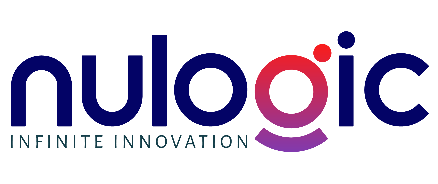The high shopping season is just around the corner, and for eCommerce businesses, this represents a unique opportunity to attract and retain customers. However, this period also poses unique challenges, especially in terms of user experience (UX) and technical preparedness. At NULogic, we understand the importance of being ready for these challenges and are here to help.

User Experience: The Key to Converting Visitors into Loyal Customers
An exceptional user experience is crucial for turning a casual visitor into a loyal customer. During the high season, eCommerce sites experience a significant increase in traffic, which can impact UX in various ways. Therefore, optimizing every aspect of the customer journey on your platform is essential.
- Design an intuitive user interface: Complicated navigation, excessively intricate layouts, and checkout processes that are either time-consuming or confusing have the potential to instantly deter shoppers. We’re all familiar with the frustration of encountering deal breakers while navigating as a shopper. A subpar user experience can quickly lead to disinterest, prompting users to bounce away without completing a purchase.Here’s what can be done
- Optimize navigation for seamless user experience, facilitating effortless product discovery
- Organize product categories logically to enhance the ease of browsing
- Strategically place clear call-to-actions (CTAs) at key points to guide shoppers towards desired actions
- Streamline the checkout process to minimize friction and enhance user satisfaction
- Offer a variety of convenient payment options at the checkout stage for user flexibility
- Page Load Time: A quickly loading page is essential for maintaining customer engagement. A slow site can lead to a high bounce rate and poor user experience. This involves using a reputable content delivery network or CDN, optimizing server response times, minimizing file sizes (through image compression and efficient coding), and leveraging browser caching. Prioritizing “Largest Contentful Paint (LCP)” is a common practice because it directly gauges the speed at which the primary content of a page loads, a crucial aspect of user satisfaction. LCP serves as a reliable metric for assessing the perceived loading speed and visual stability of a webpage, making it a key indicator of a positive user. Fast-loading pages are crucial for keeping users engaged and reducing bounce rates. For large e-commerce sites, a delay in page loading can be particularly costly. Amazon, for instance, has found that every 100ms delay in page load time can lead to a 1% loss in revenue.
- Serve up personalized content: Enhancing the eCommerce customer journey through personalization not only reduces friction but has become an anticipated norm for shoppers, given its prevalence among leading brands. Approximately 88% of surveyed shoppers consider the experience provided by a brand to be equally important as its products.
Despite this, studies reveal that brands often fall short of customer expectations, leading to a 40% departure rate from sites due to overwhelming options. While 75% of companies claim to deliver “good” or “excellent” personalized experiences, only 48% of buyers concur with this assessment.
The crux lies in tailoring content based on data such as location and past preferences. However, it’s crucial to note that many brands fail to meet personalization expectations, underscoring the importance of consistently testing the efficacy of your personalized user experience. Here’s what can be done
-
- Segment your customers according to shared characteristics to refine personalization strategies for both your website and email campaigns.
- Offer well-informed product recommendations by leveraging insights derived from preferences and browsing history.
- Implement real-time personalization that responds instantly to customer actions and preferences, fostering a dynamic and captivating user experience.
- Cart Abandonment Rate: Analyzing why customers abandon their carts can provide valuable insights to improve UX and increase conversions. This metric indicates the percentage of shoppers who add items to their cart but do not complete the purchase. Reducing this rate involves streamlining the checkout process, offering multiple payment options, and ensuring clear communication regarding shipping costs and delivery times. For e-commerce businesses, each abandoned cart represents not just a lost sale but also a missed opportunity to build a long-term customer relationship. Reducing cart abandonment rates can directly increase conversion rates and overall revenue..

- Mobile Responsiveness: With an increasing number of purchases made from mobile devices, ensuring that your site is fully functional and user-friendly on mobiles is more important than ever. This refers to a website’s ability to adapt seamlessly to different screen sizes and orientations. This involves responsive web design, which uses flexible layouts, images, and cascading style sheets (CSS) media queries.
Besides, given that Google primarily relies on a website’s mobile version for indexing and ranking purposes (known as “Google’s Mobile-First Index“), an inadequate mobile interface can result in diminished search rankings - Net Promoter Score (NPS): This metric can help you understand your customers’ loyalty and their willingness to recommend your store, which is vital for organic growth. This measures customer loyalty and satisfaction. A high NPS indicates that customers are more likely to recommend your store to others. Improving NPS involves enhancing overall customer experience, addressing customer feedback, and ensuring high-quality customer service.
You might be interested on 5 tips to reduce Cart Abandonment Rate
Technical Preparedness for the High Season
In addition to UX, technical preparedness is crucial to ensure that your eCommerce platform runs smoothly during the high season. This includes:
- Server Response Time: A fast server is crucial for handling increased traffic and ensuring a smooth user experience. This involves optimizing the backend performance of your website. It includes efficient database queries, server-side caching, and choosing a reliable hosting service that can handle high traffic volumes.
- Peak Load Capacity: It’s vital that your website can handle traffic spikes, especially during events like Black Friday. This refers to the maximum amount of traffic your website can handle without performance degradation. Preparing for peak load involves stress testing your website, optimizing resource usage, and potentially using cloud-based solutions to scale resources as needed. In this study you can learn some of the most important reasons why your ecommerce may fail during peak periods.
- Error Rate: Keeping a low error rate on your site ensures that customers have a seamless experience. This metric measures the frequency of errors encountered by users on your website. Reducing the error rate involves regular monitoring, implementing robust error handling and logging, and conducting thorough testing before major releases or updates.
Learn how to Best SEO title optimization for ecommerce sites
NULogic: Your Ally in High Season Preparation
At NULogic, we understand the importance of these UX and technical metrics for the success of your eCommerce during the high season. Our team is ready to help you optimize your platform, ensuring that every aspect, from page loading to server capacity, is prepared to handle increased traffic and sales.
If you have concerns about preparing your eCommerce platform for the holidays, contact us for a free assessment.


